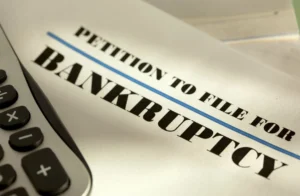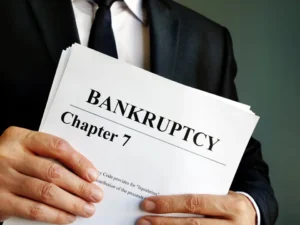Student loans are often an essential part of the college experience. While most attend college with the goal of a higher-paying career, the process is expensive. At some point, the expense of student loans is too much to handle, which results in graduates who fall behind in student loan payments. You may wonder what your options are if you are in this position.
Bankruptcy is one thought, but the type of loan you have may or may not qualify for a bankruptcy discharge. Here are some things to keep in mind before you file for bankruptcy to help you deal with your student loans.
Can You Discharge Student Loan Debt?
In general, your student loan debt is not easily discharged with a bankruptcy, though the process may have a positive impact on a portion of your loans. In both Chapter 7 and Chapter 13 bankruptcy, a student loan is an unsecured debt, which cannot go through bankruptcy. To discharge any of your student loans, you have to show you have an undue hardship.
What Is Undue Hardship?
Undue hardship shows that your repayment of the debt causes a financial hardship on you and on your family. If your student loan payments place in you in a serious financial bind, so much so you cannot meet your basic financial needs, you may be eligible for a bankruptcy discharge of your student loans.
The court will evaluate your circumstances to determine if you have a true undue hardship. Courts use two tests to make the determination. The tests are the Totality of Circumstances test and the Brunner test.
Totality of Circumstances Test
The Totality of Circumstances test looks at the circumstances of your life as a whole. The court may look at your past and present financial resources, as well as reliable means for potential future financial resources. The court also evaluates your essential living expenses and any additional facts relevant to your circumstances before it makes a determination of your eligibility for student loan discharge.
Brunner Test
The Brunner test is a more common test to determine undue hardship. You have to prove you cannot maintain a basic standard of living while you pay for your student loans. You also must prove you cannot provide a basic standard of living for a long time since you began your repayment. Additionally, you have to show you have made every effort to repay your student loans.
How Do You Prove Undue Hardship?
The court requires evidence to prove you are unable to pay your student loans and have an undue hardship. You should provide specific documents to help prove your case. Your evidence package will consist of the balance of your student loans, your tax returns, bank statements, copies of your monthly bills, and your mortgage or lease statements.
You also should submit your W2, credit card statements, your medical records if you are disabled, evidence of a job loss, the status of your dependents, and proof that you tried to repay your student loan debt.
How Do You Begin the Process?
You first need to consult with your bankruptcy attorney, even if you have not yet made a decision to file for bankruptcy. Look at the two tests to determine if you meet those standards. For instance, if you drive a luxury car and you want to discharge your student loan debt through bankruptcy, a judge will likely not agree you meet the standards of the tests.
If you have any questions about your student loans and bankruptcy, or you just want to meet for a consultation to learn about the bankruptcy process, please contact us at The Madden Law Firm Attorneys at Law.




